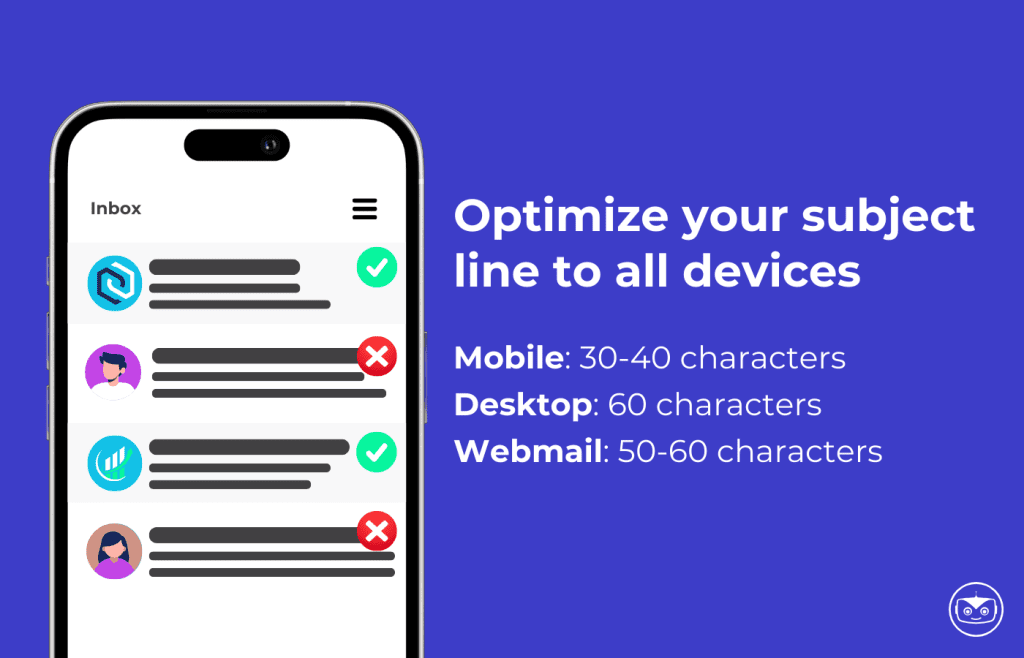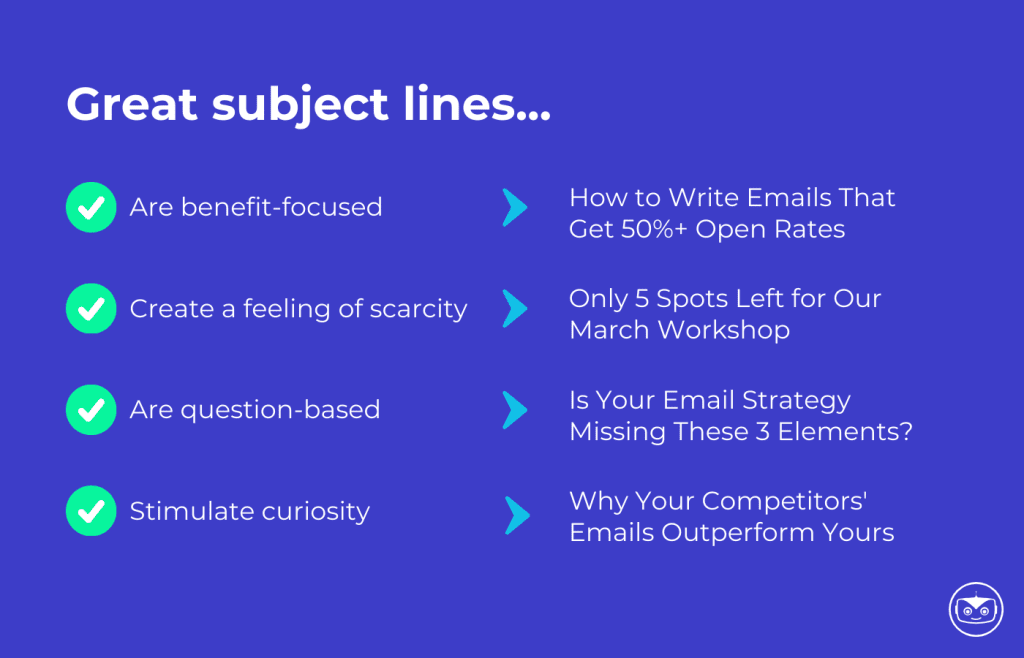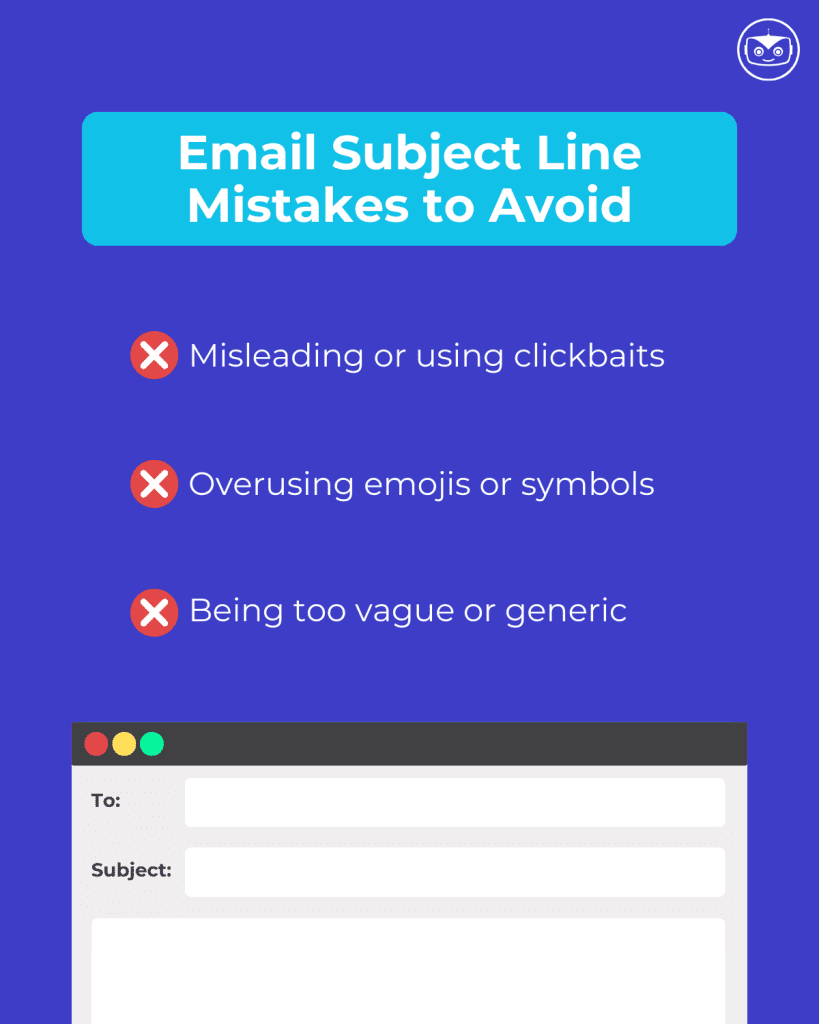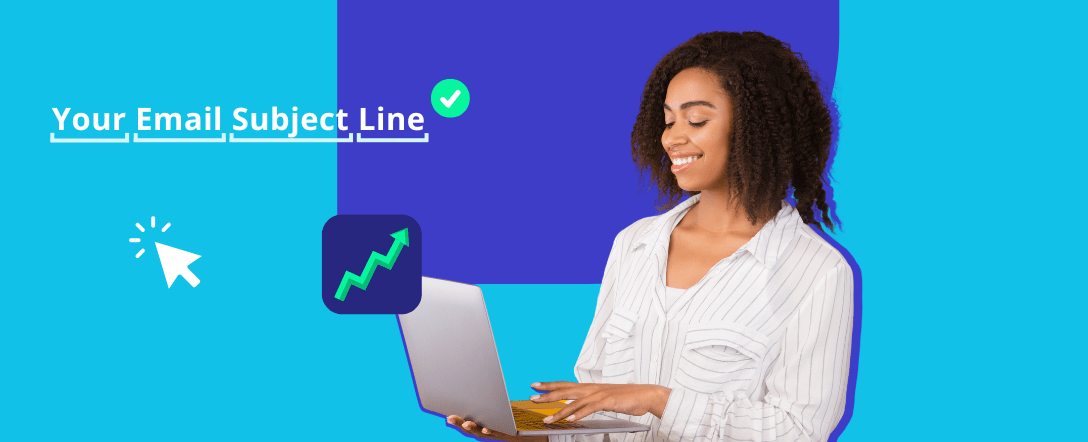In today’s crowded inbox, your email subject line is your first impression—the difference between an opened email and one that gets deleted or ignored.
According to Neil Patel, 35% of email recipients open emails based solely on the subject line. Yet many marketers treat subject lines as an afterthought, dashing off a few words just before hitting send.
This guide breaks down how to create email subject lines that not only get opens but drive engagement and action. We’ll examine sample email subject lines that have proven successful across industries and provide you with templates you can adapt for your own campaigns.
Why Your Email Subject Lines Matter More Than You Think
Before diving into specific techniques, let’s understand how subject lines impact your email success:
- 47% of people decide whether to open an email based only on the subject line, according to Zippia research.
- People spend seconds deciding whether to open your email
- Personalized subject lines boost open rates
- 69% of recipients may report an email as spam based solely on the subject line, according to Zippia research.
These numbers tell us something important: Your carefully crafted email content is worthless if your subject line doesn’t get people to open it first.

20 Best Practices for Writing Great Email Subject Lines That Get Opened
1. Keep It Simple and Direct
Nobody wants a complex, hard-to-understand subject line. Lead with a clear, straightforward message that states your email’s purpose.
For example:
- “Your March Results Are In”
- “Quick Question About Our Meeting Tomorrow”
- “Important Update: Changes to Your Account”
2. Personalize Beyond Just Names
While including someone’s name can boost open rates, true personalization goes deeper:
- “Toronto Businesses: 3 Local Regulations Affecting Your Marketing”
- “We Noticed You Looked at Our Spring Collection”
- “Based on Your Recent Purchase: Items You Might Love”
3. Create a Sense of Urgency (When Appropriate)
When used honestly, urgency can drive opens:
- “Last Chance: Workshop Registration Closes Tonight”
- “Only 5 Spots Remain for Our Marketing Summit”
- “Flash Sale: 30% Off Ends at Midnight”
- “Final Hours to Download Your Free Template”
The key is authenticity—false urgency destroys trust. Only use these triggers when the urgency is genuine.
4. Ask Compelling Questions
Questions naturally engage the reader’s mind.
For example:
- “Are Your Email Subject Lines Costing You Conversions?”
- “What Would 50% More Email Revenue Mean for Your Business?”
- “Is Your Marketing Automation Missing These Triggers?”
- “Ready to Transform Your Email Strategy in Just 3 Days?”
5. Use Action-Oriented Language
Verbs create energy and motion, compelling readers to take action:
- “Discover the Strategy That Transformed Our Conversion Rates”
- “Unlock Exclusive Resources for Your Business”
- “Transform Your Email Results with These 3 Techniques”
- “Claim Your Spot in Our Limited-Capacity Workshop”
6. Consider Length Carefully
Different devices show different amounts of your subject line.
Take note of these:
- Mobile devices: Typically show just 30-40 characters
- Desktop email clients: Display around 60 characters
- Webmail: Often shows 50-60 characters
Put the most important information first, and test different lengths with your audience.

7. Use Numbers When Relevant
Numbers stand out in a text-heavy inbox and promise specific, organized content:
- “5 Email Templates That Generated $27K Last Month”
- “3 Strategies That Increased Our Email ROI by 273%”
- “7 Tools That Cut Our Email Production Time by 62%”
Headlines with numbers typically outperform other formats—a finding that applies equally to email subject lines.
8. Test Preview Text
The preview text (the snippet shown after the subject line in many email clients) is essentially your subject line’s sidekick. Make sure it complements your subject line rather than repeats it:
Subject line: “5 Email Templates That Convert”
Preview text: “These ready-to-use templates increased our sales by 23% last month”
9. Avoid ALL CAPS and Excessive Punctuation
Writing in all caps is the email equivalent of shouting:
DON’T: “DON’T MISS THIS INCREDIBLE OPPORTUNITY!!!”
DO: “Don’t miss this incredible opportunity”
Similarly, multiple exclamation points or question marks create an impression of desperation that can trigger spam filters.
10. Keep It Clear, Not Clever
Be creative when appropriate, but never at the expense of clarity:
Too vague: “You won’t believe this!”
Too boring: “March Newsletter”
Just right: “5 Subject Line Formulas That Doubled Our Open Rates”
11. Add Value Immediately
Your subject line should answer “What’s in it for me?” for the reader:
- “Templates That Cut Your Email Creation Time in Half”
- “3 Strategies That Increased Our Email ROI by 273%”
- “The Checklist That Eliminated Our Compliance Concerns”
12. Use Social Proof When Possible
Social validation is a powerful motivator:
- “Join 5,000+ Marketers Using Our Template”
- “See Why Top Agencies Switched to This Approach”
- “How Our Clients Achieved 43% Higher Conversion Rates”
13. Test Emojis (But Use Them Wisely)
Emojis can help your subject line stand out, but use them appropriately:
- “New Recipe Alert ?” (HelloFresh)
- “Rock the Color of the Year ?” (Etsy)
- “Your Wednesday Evening Trip with Uber ?”
14. Create Curiosity Gaps
Humans are naturally driven to resolve information gaps:
- “The Unexpected Reason Your Emails Are Being Ignored”
- “We Tested 50 Subject Lines and Discovered This Surprising Pattern”
- “The Email Metric You’re Probably Not Tracking (But Should Be)”
15. Try Announcement-Style Subject Lines
New offerings or information create natural interest:
- “Introducing: Our New Email Template Generator”
- “Just Released: Q3 Email Benchmark Data”
- “New Feature Alert: Create Mobile-Perfect Emails in Minutes”
16. Address Pain Points Directly
Problem-solution structures create immediate relevance:
- “Struggling With Email Deliverability? This Solved It for Us”
- “How We Fixed Our Declining Open Rates in Just 2 Weeks”
- “The Solution to Your Email Compliance Concerns”
17. Avoid Spam Trigger Words
Words like “free,” “guarantee,” “no risk,” and “cash” can trigger spam filters, especially when combined with excessive punctuation or ALL CAPS.
18. Segment Your Audience
Different audience segments respond to different subject line approaches. What works for new subscribers might not work for long-time customers.
19. Be Timely and Relevant
Connect your subject lines to current events, seasons, or timely needs when appropriate:
- “Where to Drink Beer Right Now” (sent at 6:45 PM on a Wednesday)
- “Last-Minute Valentine’s Day Gift Ideas That Don’t Feel Last-Minute”
- “Stay Productive While Working from Home: 5 Expert Tips”
20. Always A/B Test
Never assume you’ve created the perfect subject line. Test different elements to find what drives the most opens and conversions. When collecting sample email subject data, make sure to test across different audience segments for the most accurate results.
Best Lines That Consistently Perform

Certain subject line formats have proven to be consistently effective across industries:
Benefit-Focused Subjects
- “How to Write Emails That Get 50%+ Open Rates”
- “Double Your Email Conversions This Month”
- “Get More Leads Without Increasing Your Budget”
Question-Based Subjects
- “Is Your Email Strategy Missing These 3 Elements?”
- “Ready to Increase Your Email Open Rates?”
- “What Would You Do With 30% More Conversions?”
Scarcity/Urgency Subjects
- “Last Day: Early-Bird Pricing Ends at Midnight”
- “Only 5 Spots Left for Our March Workshop”
- “24 Hours Left: Claim Your Bonus Resources”
Curiosity-Driven Subjects
- “The Email Mistake Most Marketers Make”
- “Why Your Competitors’ Emails Outperform Yours”
- “The Surprising Truth About Email Frequency”
Professional Subject Lines Examples
Professional email subject lines need to be clear, direct, and appropriate for business communication:
For Follow-Ups
- “Follow-up on Our Recent Discussion”
- “Checking In: Progress Update Needed”
- “Follow-up: Action Items from [Meeting/Event]”
For Responses or Confirmations
- “Confirmation: Your Meeting Request for [Date]”
- “Thank You for Your Prompt Response”
- “Acknowledgment of [Document/Report] Receipt”
For Networking
- “Introduction and Opportunity for Collaboration”
- “Networking Request: Exploring Mutual Interests”
- “Connecting for [Specific Purpose]”
For Meeting Invitations
- “Invitation: [Meeting Topic] on [Date]”
- “Save the Date: [Event/Workshop] on [Date]”
- “Your Presence Requested at [Meeting] on [Date]”
For Deadlines
- “Action Required: Review and Approve [Task] by [Deadline]”
- “Deadline Approaching: Submit [Document/Report] by [Date]”
- “Urgent Action Required: [Specific Task] by [Deadline]”
Cool Subject Lines That Get Attention
Sometimes you need a subject line that stands out from the typical business communication:
- “Don’t Open This Email” (Manicube)
- “As You Wish” (UncommonGoods – Princess Bride reference)
- “Not Cool, Guys” (BuzzFeed)
- “Where to Drink Beer Right Now” (Eater Boston)
- “We Saw You Checking Us Out ?” (Warby Parker)
- “Rock the Color of the Year” (Etsy)
- “Abra-cord-abra! Yeah, We Said It.” (Quirky)
- “DO NOT Commit These Instagram Atrocities” (Thrillist)
A/B Testing
- For reliable test results, you need at least 1,000 recipients per variation for statistical significance, minimum of 5% difference in open rates to consider it meaningful, and at least 24 hours of data collection before declaring a winner.
Test these high-impact variables first:
- Value proposition framing (different benefits or outcomes)
- Personalization approaches (name vs. behavior vs. interests)
- Question vs. statement format
- Length (short vs. medium vs. long)
- Specific vs. curiosity-driven approaches
Email Subjects Mistakes to Avoid
1. Misleading or Clickbait Approaches
The quickest way to destroy trust is to promise something in your subject line that your email doesn’t deliver.
Examples to avoid:
- “Your account status” (when it’s actually a promotional email)
- “Re: Our conversation” (when no prior conversation exists)
- “URGENT response needed” (for non-urgent marketing messages)
2. Being Too Vague or Generic
Generic subject lines fail to create any compelling reason to open:
- “Monthly newsletter”
- “July update”
- “Information for our subscribers”
- “Check this out”
Specificity almost always outperforms generality in subject line performance.
3. Overuse of Special Characters and Symbols
While an occasional emoji can boost open rates in the right context, overuse of special characters typically triggers spam filters:
- “??? H-O-T DEALS INSIDE!!! ???”
- “SAVEBIG
- SAVEBIG on our AMAZING offers!!!”
- “►►►► Don’t miss this incredible chance ◄◄◄◄”

Creating Successful Email Subject Lines
Creating consistently effective subject lines isn’t about clever wordplay or manipulative tactics—it’s about deeply understanding your audience and communicating genuine value in a compelling way.
The most successful email marketers:
- Research thoroughly: Understand audience pain points, desires, and language
- Test systematically: Build knowledge through consistent experimentation
- Analyze holistically: Look beyond opens to engagement and conversion metrics
- Respect the recipient: Never sacrifice long-term trust for short-term opens
- Apply proven principles: Use established psychological triggers appropriately
Remember that your subject line makes a promise that your email content must fulfill. The most successful subject lines don’t just get opens—they set the stage for meaningful engagement that builds lasting relationships and drives measurable results.
Speaking of building relationships, to create a great email strategy, you need an email platform you can trust. Meet Cyberimpact, Canada’s #1 email platform that makes email marketing easy.
From small businesses to government institutions, we offer a drag-and-drop email editor, bilingual support, and countless resources to help you thrive using email.
Get started with a free account (up to 250 contacts) and try out the platform.

